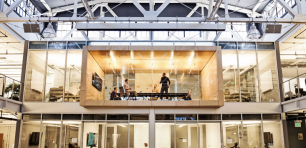
Source: Unsplash/M Accelerator
It has been clear for many years now that unconscious bias training does not deliver on its promise of creating equal opportunities for all in the workplace. Just google “why unconscious bias training doesn’t work” and you will be overwhelmed by the number of studies, papers and blogs addressing the topic.
The research is undeniable: becoming aware of your biases does not change your behaviour or address the systemic barriers. In fact, sometimes, unconscious bias training can make things worse — you take your unconscious bias and make it conscious.
The real barrier we need employees and managers to understand is the inbuilt bias that is embedded in our recruitment, rewards and promotions processes — no amount of bias awareness will change these.
As Gloria Tabi, a global equity and inclusion expert said recently in an interview “…if anything at all it [bias training] is actually quite harmful because companies are ticking the bias training box and saying well, we are fine now we’ve done our bias training so you know black people are all right in our country, in our organisation.”
So why then are we, diversity and inclusion professionals and experts, still delivering this training?
Because with many organisations it is our only way in.
Despite its failings, unconscious bias training has started conversations in organisations that have never considered inclusion before. LGBTIQA+ training? Cultural inclusion? “Hmm no thanks, we don’t have any problems here.” Unconscious bias training? “Yes that would be a good thing for us to do, wouldn’t it?”
Unconscious bias training starts conversations that many businesses have not had before.
It appeals to the masses. I cannot count the number of times I have delivered LGBTIQA+ training to a room of LGBTIQA+ employees and a few allies (usually people who have a family member who is queer). But bias training appeals to a broader audience: people are curious about their biases, they are fascinated by how our brains work and they feel much more comfortable talking about bias than homophobia or racism (which clearly highlights the problem, but work with me here). Employees will show up to unconscious bias training.
So why, as professionals, would we play into this? Why not just say no?
Well, once you have them there, in the room or on the Zoom, you can deliver whatever material you like.
Sure, first you teach participants about unconscious bias and show them ways to identify their own biases — but then you can move into the real work:
- How do you identify bias in a process, system or policy?
- How has systemic racism, sexism and ableism affected the opportunities of your colleagues?
- What do you need to put in place so that bias will not drive your next decision?
- And importantly, how can you advocate for equity within your workplace and broader community?
Unconscious bias training is the marketing tool used to bring people to the conversation; the need to address systemic bias and discrimination is the message we want them to leave with.
As diversity and inclusion professionals, we do not always get presented with an open door and the red carpet laid out for us. Often the door is left ajar and there are boxes, backlashers and red tape littering our path. So, we use our skills in negotiation and influencing people to step over the barriers and make our way in.
Once in, we can start the process of engagement and change, and start the real work — identify the barriers and create impact for the marginalised and minority groups who are already in the organisation or who want to be. This is where we create the change.
That’s the end game for me. I don’t really mind where the starting line is.
Handpicked for you

We versus they: How COVID-19 has completely changed our concept of a workplace



COMMENTS
SmartCompany is committed to hosting lively discussions. Help us keep the conversation useful, interesting and welcoming. We aim to publish comments quickly in the interest of promoting robust conversation, but we’re a small team and we deploy filters to protect against legal risk. Occasionally your comment may be held up while it is being reviewed, but we’re working as fast as we can to keep the conversation rolling.
The SmartCompany comment section is members-only content. Please subscribe to leave a comment.
The SmartCompany comment section is members-only content. Please login to leave a comment.